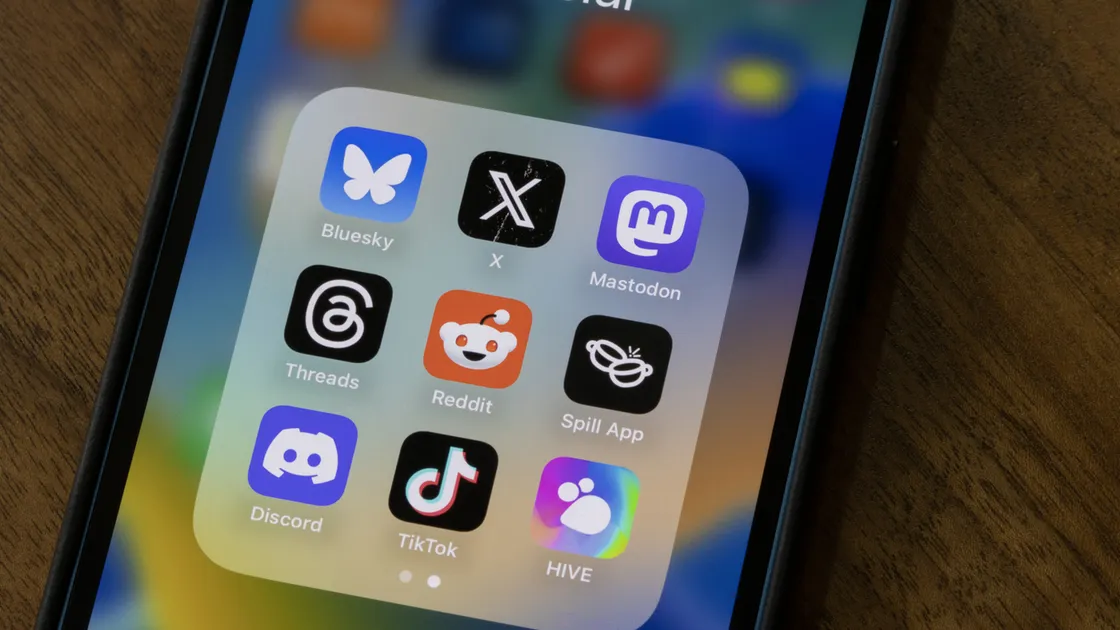Influencer Marketing in Japan: What You Need to Know About Premium Labeling Laws

If you’re working with influencers to reach Japanese audiences, understanding the country’s disclosure laws isn’t optional, it’s essential. Japan’s Premiums and Representations Act sets clear boundaries for what counts as advertising and how that must be communicated.
With recent updates targeting influencer content specifically, even gifted products or unpaid posts can fall under legal scrutiny.
This guide breaks down what you need to know to run compliant, trustworthy campaigns that resonate with Japanese consumers.
However, please note: For the most accurate and up-to-date legal information, always consult official Japanese government resources, such as the Consumer Affairs Agency:
- Main site: https://www.caa.go.jp/
- Guidelines on influencer and fair labeling (景品表示法): https://www.caa.go.jp/policies/policy/representation/fair_labeling/index.html#unfair_giveaway
What Is the Premiums and Representations Act in Japan?
Japan’s advertising landscape is governed by a legal framework that may feel unfamiliar to overseas marketers. One of its core pillars is the Premiums and Representations Act, which sets strict boundaries around promotions and claims. To run influencer campaigns legally in Japan, understanding this law is essential. Let’s begin by exploring its purpose and how the 2023 update brought influencer marketing into sharper legal focus.
Overview of The Premiums and Representations Act and Why It Matters in Marketing
The Premiums and Representations Act, known in Japanese as 景品表示法 (Keihin Hyōji Hō), is a cornerstone of consumer protection law in Japan. Originally enacted in 1962, its purpose is to ensure fair commercial practices by regulating how businesses offer premiums (such as giveaways or gifts) and how they present product claims. The law exists to prevent exaggerated, misleading, or deceptive promotions that could mislead consumers or create unfair competition.
In a marketing context, the Act places limits on both what can be promised to consumers and how such promises are communicated. While it historically focused on product packaging, in-store campaigns, and traditional advertising, recent years have seen its interpretation expand into digital domains, including social media and influencer marketing.
For marketers working with Japanese audiences, this law isn’t just a formality, it plays a crucial role in shaping what kinds of influencer content are allowed. Misrepresenting a product’s effectiveness or value, or failing to properly disclose promotional relationships, can be deemed a violation. As such, the law acts as a framework to encourage transparency and honesty in marketing practices, directly impacting how influencer campaigns must be planned and executed in Japan.
How the 2023 update affects influencer campaigns
In 2023, Japan’s Consumer Affairs Agency introduced formal guidance clarifying how the Premiums and Representations Act applies to influencer marketing. This was a pivotal development that moved the discussion from abstract legal principles into practical enforcement. For the first time, influencer content was explicitly named as a potential vector for deceptive representations, if not handled properly.
The update outlined that any content created by influencers in exchange for compensation, goods, or promotional value must be clearly labeled as advertising. What constitutes “compensation” was also broadened to include not just direct payment, but also non-monetary benefits such as free products, event invitations, or access to services. Importantly, even when there is no formal contract, the expectation or understanding that content will be posted in return for benefits can trigger disclosure obligations.
This shift has fundamentally changed how brands must approach collaborations with influencers. Campaign planning now requires a compliance layer, ensuring that all promotional content adheres to the visibility, timing, and format standards mandated by the agency. Failure to comply may result not only in regulatory penalties but also in reputational damage, both for brands and creators. Thus, the 2023 update has effectively reframed influencer marketing in Japan from a grey area to a regulated advertising activity.
Disclaimer: This interpretation reflects best practices in 2025 but may be subject to updates. For binding guidance, consult with legal experts or review the Consumer Affairs Agency’s announcements directly.
More information: 景品表示法について(公正取引)
When Is Disclosure Legally Required?
Not all influencer content falls under legal scrutiny, but many campaigns do. Whether or not disclosure is mandatory depends on the nature of the relationship between brand and influencer. This section walks through the specific situations where labeling becomes a legal requirement, including some that may surprise even seasoned marketers.
Scenarios that trigger mandatory labeling
Under the 2023 guidelines, disclosure becomes legally required whenever there is a “material connection” between the influencer and the brand. This means any relationship that could affect the credibility of the message being delivered, including financial, contractual, or implicit benefits, must be transparently disclosed.
The most straightforward scenario is when an influencer receives direct payment to promote a product or service. However, the regulation goes further, encompassing less formal arrangements. For example, if an influencer receives a product for free with the implied expectation that it will be featured on social media, this too falls under the scope of the law. Likewise, providing early access, exclusive invitations, or discount codes that benefit the influencer financially are all considered triggers for mandatory labeling.
The requirement applies regardless of whether the brand explicitly asks for a post or the influencer voluntarily creates content in anticipation of future opportunities. What matters is the presence of benefit and expectation, whether verbalized or assumed. For marketers, this means that nearly all forms of influencer collaboration now carry a disclosure obligation, and any ambiguity could be interpreted as non-compliance.
Even “gifted” or “invited” content can require disclosure
One of the most commonly misunderstood areas in influencer marketing under Japanese law is the treatment of non-paid collaborations, especially those involving free products or exclusive experiences. Many influencers and brands have traditionally assumed that if no money changes hands, disclosure is optional. However, the 2023 guidelines make it clear: that assumption is no longer valid.
If an influencer receives a product, service, or invitation with the expectation, explicit or implicit, that it will be featured online, that content qualifies as advertising under the law. For example, if a cosmetics brand sends samples “for consideration,” and the influencer posts about them on Instagram or YouTube, they must clearly disclose the nature of that relationship. Even when the brand doesn’t formally request coverage, the act of gifting can create a perceived obligation that influences the content.
The same applies to event invitations, restaurant tastings, or hotel stays provided to influencers. If the benefit is received in a marketing context, meaning it’s part of the brand’s promotional activity, disclosure is required. The regulation emphasizes the consumer’s right to understand whether the content is purely organic or influenced by a business relationship. Therefore, both influencers and marketers must treat gifted or invited content with the same legal seriousness as paid posts.
What Does Proper Disclosure Look Like?
Once you’ve determined that disclosure is required, the next question becomes: what does proper compliance actually look like? In Japan, it’s not enough to simply include a hashtag or mention sponsorship somewhere. This section explains the standards for placement, clarity, and format, and shows how to distinguish between compliant and non-compliant examples.
Placement, visibility, and format rules
To comply with Japan’s Premiums and Representations Act, disclosure must not only exist, it must be unambiguous, immediate, and easily understood. The 2023 guidelines specify that labeling should enable an average consumer to instantly recognize that the content they are viewing is advertising. Subtle or delayed disclosures are considered insufficient and may be treated as violations.
The placement of disclosure is critical. It must appear at the very beginning of the content or in a location that does not require the viewer to scroll, expand, or interpret multiple elements. For text-based platforms like Instagram or blogs, the disclosure should be included within the first line of the caption or body. In video formats, verbal disclosure at the start combined with an on-screen visual cue is recommended.
Visibility also plays a key role. Hashtags like #PR or #ad must be in a font size and color that clearly contrasts with the background. Disclosures hidden among other hashtags, placed at the end of a long caption, or buried in less visible parts of a video can render the entire post non-compliant. The format must make it obvious and immediate: users should never have to question whether a piece of content is sponsored.
These requirements reflect the law’s guiding principle, that consumers should be able to distinguish promotional content from editorial or personal content without effort. Anything less is considered misleading, regardless of intent.
OK vs. NG examples (with visuals)
Understanding the difference between compliant and non-compliant disclosure often comes down to execution. While the law provides principles, enforcement hinges on how those principles are applied in real-world posts. Below are representative examples that illustrate acceptable and unacceptable practices, particularly in the Japanese regulatory context.
An effective example might include the hashtag #PR placed at the very beginning of an Instagram caption, in full-width Japanese characters, and visually distinguished using bold formatting or contrasting background color. In this case, the disclosure is immediately visible, culturally recognizable, and unmistakably tied to the promotional nature of the content. Similarly, a YouTube video that opens with the creator clearly stating, “This video contains a paid partnership with [Brand],” accompanied by on-screen text for the first several seconds, meets the requirements for both clarity and visibility.
By contrast, an example that would likely violate the regulation could include placing #ad at the very end of a caption, after several hashtags and line breaks, or using a pale font color that blends into the background of a Story post. A verbal mention in a video that occurs near the end, or only in the description box, would also fall short. These tactics may technically include disclosure, but fail to deliver it in a way that the average viewer would notice or understand without effort.
Japanese regulators emphasize that the form of the disclosure is just as important as its presence. Ambiguity or obscurity is treated as deceptive by omission. Visual clarity, cultural fluency, and immediacy are key, and brands that proactively model good disclosure practices can establish both legal safety and audience trust.
Who Is Responsible? And What Happens If You Don’t Comply?
Disclosure rules aren’t just guidelines, they carry legal weight. But who exactly is held accountable when things go wrong? This section breaks down the legal responsibilities of advertisers, agencies, and influencers, and explains what happens when campaigns fall short of compliance.
Advertiser, agency, influencer, who’s legally liable
Responsibility for legal compliance under Japan’s Premiums and Representations Act does not rest solely on one party, it is shared across the entire promotional chain. Each actor in an influencer marketing campaign holds a distinct obligation, and the law recognizes this tripartite structure when determining liability.
Advertisers carry the primary burden. As the party commissioning the campaign, they are expected to ensure that all associated content, whether produced by agencies or influencers, adheres to disclosure requirements. This includes providing clear instructions, reviewing output, and intervening when posts fall short of compliance standards.
Agencies are expected to function as both facilitators and enforcers. They serve as the conduit between brands and influencers, and thus must educate creators on their legal duties, design workflows that include compliance checks, and maintain documentation proving due diligence. If an agency fails to take reasonable steps to prevent violations, it too may be held accountable.
Influencers are not exempt. Even if they are not directly employed by the advertiser, they are considered active participants in the promotional act. If they knowingly omit required disclosures or resist editorial guidance provided by the agency or brand, they can be individually cited for violations.
In short, compliance is a shared responsibility, and Japanese regulators have made it clear that ignorance or outsourcing is not a defense. All parties involved must actively participate in upholding transparency standards, or risk facing legal and reputational consequences.
Fines, public naming, and brand fallout
Non-compliance with Japan’s Premiums and Representations Act can result in more than just behind-the-scenes warnings, it carries real-world consequences that can damage both legal standing and brand reputation. The Consumer Affairs Agency (CAA) has the authority to impose corrective actions, publicly name violators, and in some cases, pursue financial penalties.
The most common enforcement measure is a cease-and-desist order, requiring the advertiser to immediately halt any misleading or non-compliant promotional activity. This order is often accompanied by a formal notice published on the CAA’s official website, identifying the violator and outlining the nature of the offense. The public naming component alone can have far-reaching implications, especially in a market like Japan where consumer trust is built on discretion, modesty, and perceived sincerity.
For repeat or serious infractions, administrative fines may be levied, though the primary risk is reputational. Brands that are seen as disregarding disclosure rules may face backlash on social media, loss of consumer goodwill, and distancing from influencers who do not want to be associated with non-compliant campaigns. Agencies involved in multiple violations may also lose client trust or face contract terminations.
Importantly, even if only the influencer post is in violation, all parties involved, the brand, agency, and influencer, can suffer reputational fallout. Japan’s regulatory approach favors public accountability over silent arbitration, making transparency not just a legal issue, but a strategic imperative for brand integrity.
How to Run a Compliant Influencer Campaign
Compliance doesn’t happen by accident, it’s the result of clear processes, proactive planning, and strong documentation. This section walks you through practical steps to safeguard your influencer campaigns, from pre-launch checklists to legally sound contract clauses and review workflows.
Pre-launch compliance checklist
Ensuring compliance with Japan’s disclosure regulations begins long before an influencer hits “post.” Brands and agencies must build transparency into every stage of campaign planning, from creative briefing to final publication. A structured pre-launch process not only minimizes legal risk but also fosters consistency, accountability, and trust among all stakeholders.
The first step is aligning internally on the campaign’s legal obligations. This means reviewing whether any form of compensation, monetary or non-monetary, is involved, and confirming that all parties understand when and how disclosure must occur. The brand should then provide standardized disclosure guidelines to influencers and agencies, including specific language and placement rules.
Next comes content review. Captions, scripts, thumbnails, and visuals should all be pre-screened to verify that the required disclosures are visible, unambiguous, and culturally appropriate. This step should be documented, with versions saved for auditing purposes if needed later.
Additionally, a record of all gifts, payments, and agreements should be maintained to prove that the promotional nature of the relationship was clearly established. Influencers should be educated on their responsibilities, not just through legalese, but with clear explanations and examples.
Building these elements into a reusable checklist makes compliance repeatable and scalable. Rather than treating disclosure as an afterthought, embedding it into the creative process reinforces both ethical standards and legal safety. In Japan’s increasingly regulated digital space, preparation is not optional, it is the cost of entry for sustainable, trusted influencer campaigns.
Sample contract clauses and review processes
A robust influencer contract is one of the most effective tools for ensuring compliance with Japan’s disclosure regulations. It transforms legal expectations into enforceable terms, making it clear that transparency is not negotiable but a shared obligation. Well-crafted agreements protect all parties, brands, agencies, and influencers, by defining responsibilities, setting expectations, and outlining consequences.
One essential clause is the mandatory disclosure requirement, which should specify the exact language and format the influencer must use (e.g., “#PR” at the beginning of all captions, verbal disclosure at the start of video content). This clause should also reference relevant Japanese legal standards, such as the Premiums and Representations Act and any official guidance from the Consumer Affairs Agency.
Equally important is a content review and approval clause. This provision grants the brand or agency the right to review all promotional materials before publication, ensuring disclosures are visible and accurate. It should also set realistic timelines for feedback and corrections to avoid rushed, non-compliant posts.
A non-compliance clause adds weight to the agreement by outlining remedies if the influencer fails to adhere to the rules. This may include content takedown requests, payment withholding, or termination of the contract. While enforcement should be a last resort, its presence reinforces the seriousness of the obligations.
Beyond the contract itself, the review process should be formalized. This means designating compliance checkpoints, maintaining version-controlled drafts, and conducting a final audit before launch. When disclosure is treated as a contractual and operational norm, rather than an optional courtesy, it becomes embedded in the campaign’s DNA, ensuring legal safety and brand consistency across every collaboration.
Conclusion|Transparency as a Brand Asset
Navigating Japan’s influencer regulations can feel overwhelming, but you don’t have to do it alone. We work with global brands and agencies to help them launch campaigns that are not only creative, but fully compliant with Japanese law.
Whether you’re still planning your first collaboration or need to double-check an upcoming post, our team is here to help. Just reach out for a quick, obligation-free consultation.
→Contact us for a quick consultation
Clear answers. No legalese. Just practical support from a team that understands both marketing and regulation in Japan.






